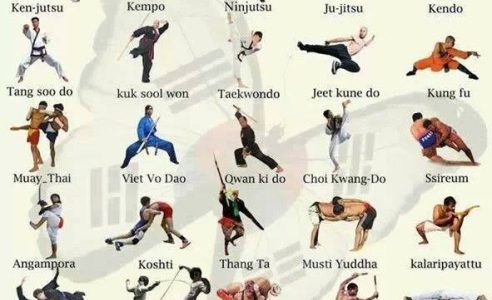Just How Do The Discipline-Centered Method Of Typical Martial Arts And The Competition-Driven Nature Of Modern Combat Sports Differ? Discover The Substantial Distinctions That Can Form Your Experience
Just How Do The Discipline-Centered Method Of Typical Martial Arts And The Competition-Driven Nature Of Modern Combat Sports Differ? Discover The Substantial Distinctions That Can Form Your Experience
Blog Article
Web Content Writer-Sherman Rocha
When you think of martial arts, do you lean a lot more towards the typical methods or the contemporary fight sports? Each course supplies unique advantages and experiences, formed by their approaches and training techniques. Typical martial arts highlight individual growth and discipline, while modern-day combat sports focus on competitors and performance. Understanding these distinctions can lead you in choosing the right method for your trip. But how do these differences materialize in training and ideology?
The Philosophy and Background Behind Standard Martial arts
While many individuals connect martial arts with physical combat, the ideology and background behind conventional martial arts run much deeper. You'll find that these techniques emphasize personal growth, self-control, and respect.
Originating from ancient techniques, typical martial arts were often established for Self-Defense and spiritual growth. They symbolize concepts such as equilibrium, consistency, and self-control, leading professionals past simple combating abilities.
As you train, you'll not only learn methods however additionally acquire insights into the culture and values that shaped these arts. The rituals and customs, commonly passed down through generations, promote a sense of community and belonging.
The Affordable Nature of Modern Battle Sports
Modern battle sports have changed the landscape of martial arts right into a highly affordable arena, where athletes take on in a test of ability, strategy, and endurance.
You'll observe that competitors are typically organized with stringent rules and regulations, making sure fair play and safety. These events draw in big audiences, fueling the exhilaration and intensity of competitions.
Athletes educate rigorously, not just for physical prowess yet also for mental strength, understanding that every information counts in the ring. The adrenaline rush during competitions is palpable, as boxers press their restrictions to assert victory.
go to the website appreciate the athleticism and virtuosity entailed, making modern battle sporting activities a thrilling spectacle that continues to advance and captivate enthusiasts worldwide.
Training Approaches and Strategies: A Relative Analysis
The competitive ambience of contemporary fight sports needs ingenious training approaches that vary significantly from conventional martial arts.
In modern training, you'll concentrate on details strategies, sparring, and conditioning, frequently using drills that simulate genuine battle scenarios. You'll see a focus on quantifiable performance and frequent competitors to analyze your abilities.
In more information , traditional martial arts prioritize forms, katas, and philosophical mentors, usually emphasizing technique and respect over competition.
Training is generally less intense and may include recurring method rather than real-time sparring.
While both approaches construct skill and health and fitness, contemporary combat sporting activities provide a much more vibrant and adaptable training setting, preparing you for immediate difficulties in the ring or cage.
Select the course that aligns with your goals and interests.
Conclusion
In choosing between traditional martial arts and contemporary battle sports, it truly boils down to what you value many. If you're searching for personal growth, discipline, and a sense of community, standard arts could be your best fit. Yet if you flourish on competitors and real-time challenges, contemporary combat sporting activities could be the method to go. Inevitably, both courses use one-of-a-kind advantages, so it's everything about aligning your training with your personal goals and interests.
